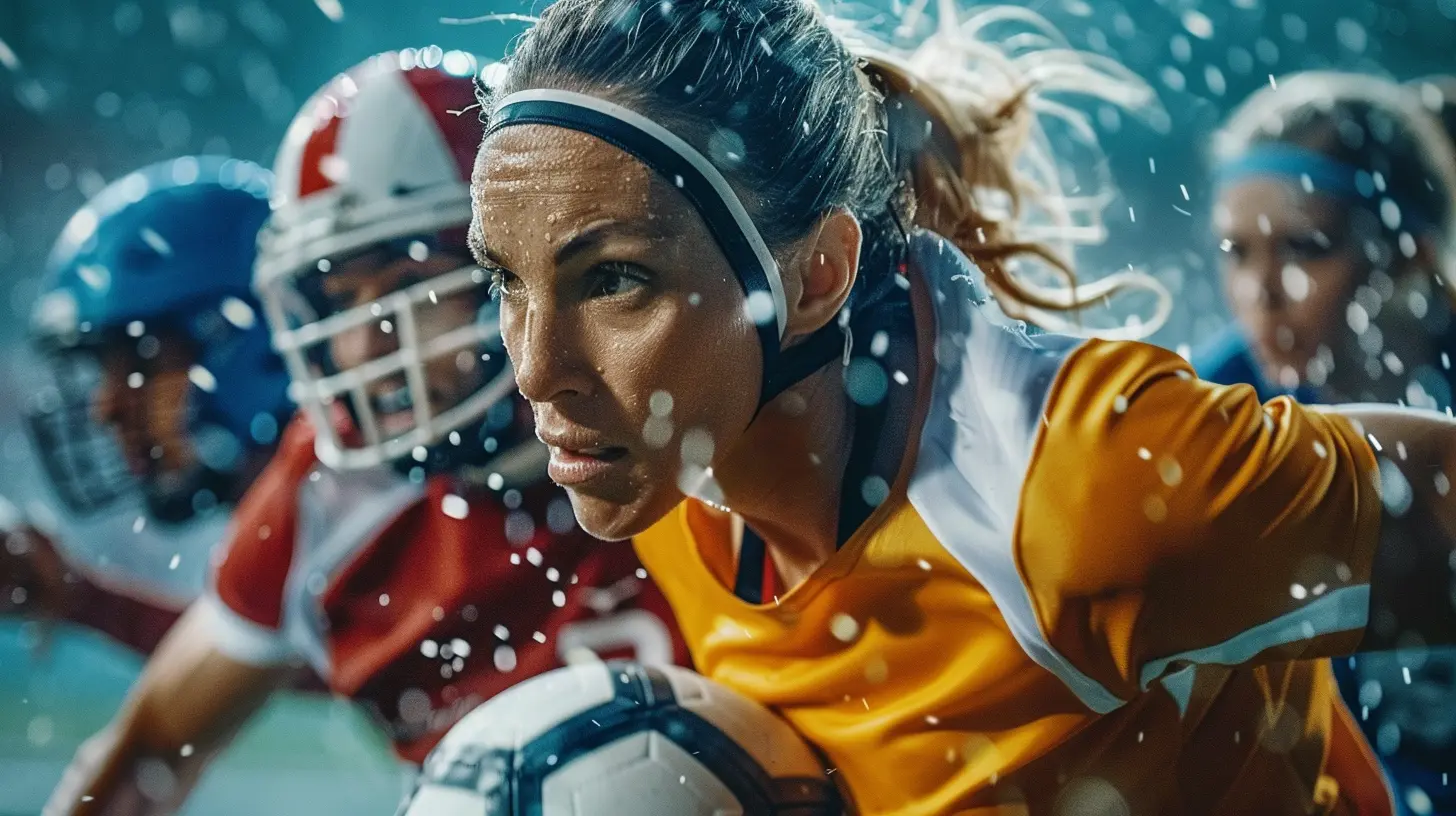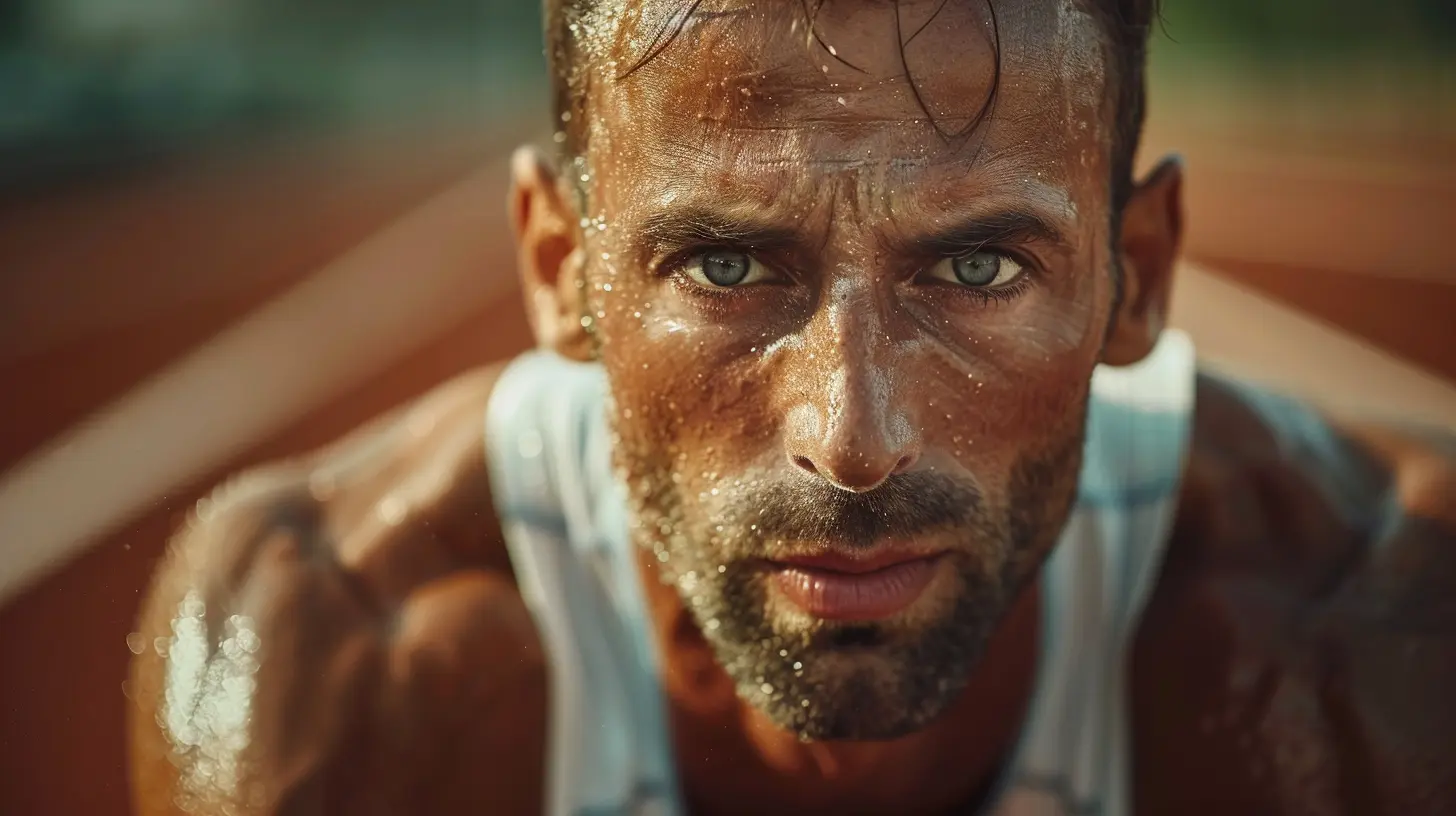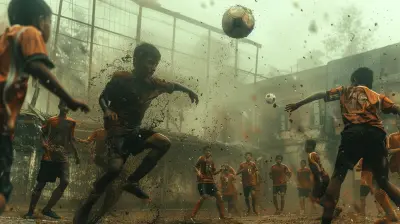Does Age Really Affect Athletic Performance? The Science of Aging Athletes
30 October 2025
Sports have long been seen as a young person’s game. We watch in awe as teenage gymnasts flip through the air, fresh-legged runners break records, and young football players dominate the field. But is it really true that age inevitably slows an athlete down? Or is it just a societal belief that younger means better? Let’s dive into the science behind aging and athletic performance to uncover the truth.

The Truth About Aging and Athletic Performance
Aging is a natural part of life, but when it comes to sports, it’s often viewed as a disadvantage. Athletes in their 30s and beyond are frequently labeled as “past their prime.” But is this entirely accurate? While it's true that the body undergoes changes with age, the relationship between aging and performance is far more complex than a simple decline.Some athletes continue to perform at elite levels well into their 40s, and in some sports, experience and strategy can even outweigh raw physical ability. So, does age really determine an athlete’s potential? Let’s break it down. 
How Does Age Affect Physical Performance?
Aging does bring about certain physiological changes. Some of the most commonly cited factors include:1. Decreased Muscle Mass and Strength
As we age, we naturally lose muscle mass—a process known as sarcopenia. Studies show that muscle mass declines by about 3-8% per decade after the age of 30. With less muscle, strength and power can also take a hit, making it harder for aging athletes to maintain peak performance.However, this decline isn’t set in stone. Strength training, resistance exercises, and proper nutrition can significantly slow down muscle loss. Just look at Tom Brady, who remained an elite NFL quarterback well into his 40s by focusing on conditioning, flexibility, and diet.
2. Slower Recovery Times
One of the most noticeable changes with age is how long it takes to recover from workouts or injuries. Younger athletes can bounce back quickly after intense training sessions, while older athletes often need more time to heal and rebuild.This doesn’t mean older athletes can’t perform—it just means they need to be smarter about recovery strategies. Proper sleep, hydration, targeted nutrition, and recovery techniques (like ice baths and massage therapy) can help keep the body fresh.
3. Declines in VO2 Max
VO2 max, or the body’s ability to utilize oxygen during exercise, tends to decrease with age. This means endurance athletes like marathon runners and cyclists may find it harder to sustain high levels of performance as they get older.But here’s the kicker—elite endurance athletes often don’t experience the same drastic decline as those who remain inactive. In fact, studies have shown that older athletes who maintain consistent training can slow down the loss of VO2 max, keeping their performance levels surprisingly high.
4. Reduced Flexibility and Mobility
Joints and muscles become less flexible over time, which can increase the risk of injuries. Sports that demand a high range of motion, like gymnastics or figure skating, can be more challenging for aging athletes.However, stretching, yoga, and mobility exercises can help maintain flexibility, proving that aging doesn’t necessarily mean stiffness and immobility. 
The Mental Edge: Experience vs. Raw Talent
While the body may show signs of aging, the mind has its own advantages. Older athletes often have a massive edge when it comes to experience, mental toughness, and strategy.1. Better Decision-Making
Experience brings wisdom. Older athletes typically have a deeper understanding of their sport, allowing them to anticipate plays, make smarter decisions, and outthink younger competitors.Think about quarterbacks like Peyton Manning or tennis players like Serena Williams. Their ability to read the game, stay composed under pressure, and adjust strategies often gives them an advantage over physically stronger but less-experienced opponents.
2. Mental Resilience
Years of competition build mental toughness. Older athletes have faced setbacks, injuries, and tough losses, making them more resilient. They know how to push through pain, stay focused, and deliver when it matters most.Take endurance sports, for example. A seasoned marathon runner may not have the fastest sprint speed, but their ability to pace themselves, manage energy levels, and stay mentally strong often leads them to victory.
3. Strategic Training Approaches
Younger athletes rely more on raw physical ability, but older athletes know how to train smarter, not harder. They optimize their workouts, focus on recovery, and fine-tune their skills to get the most out of their bodies without unnecessary wear and tear.
Sports Where Age Isn't a Limiting Factor
While some sports favor youth, others actually see older athletes thriving. Let’s take a look at some sports where age isn’t necessarily a drawback:1. Golf
Golf is all about precision, skill, and mental focus—qualities that improve with experience. Some of the greatest golfers, including Tiger Woods and Phil Mickelson, have remained competitive well beyond their 30s and 40s.2. Endurance Sports (Marathons, Ultra Running, Cycling)
In endurance sports, experience often trumps youth. Many elite marathon runners remain competitive in their late 30s and early 40s. In ultra-endurance events, athletes in their 40s and even 50s often outperform younger competitors due to superior pacing and mental endurance.3. Motorsports (Formula 1, NASCAR, MotoGP)
In racing, reaction time is important, but experience, composure, and decision-making matter just as much—if not more. Legendary drivers like Lewis Hamilton and Valentino Rossi have shown that age doesn’t necessarily slow down champions.4. Strength Sports (Powerlifting, Strongman Competitions)
Powerlifters and strongman athletes often reach their peak strength in their 30s and 40s. Unlike speed-dependent sports, strength can be maintained longer with proper training, and technique plays a huge role in lifting heavier weights.Can Athletes Defy Age?
The short answer? Absolutely. While age-related changes are inevitable, they don’t have to spell the end of an athlete’s career. With the right training, nutrition, and mindset, many athletes continue to perform at elite levels long after their supposed "prime years."Consider LeBron James, who, in his late 30s, is still one of the best players in the NBA. Or Roger Federer, who won Grand Slam titles well into his late 30s. These athletes have proven that dedication, smart training, and discipline can keep them competing at the highest level.
Additionally, advancements in sports science, recovery technology, and nutrition have made it easier than ever for aging athletes to stay in peak condition. From cryotherapy and hyperbaric chambers to personalized diet plans, modern athletes have more tools at their disposal than ever before.
Conclusion: Age Is Just a Number
So, does age really affect athletic performance? Yes—but not in the way most people think. While physical changes occur, they don’t automatically mean an athlete is finished. Experience, strategy, and training adjustments can often make up for any physiological declines.The key takeaway? Age should never be seen as a limit. Whether you're a weekend warrior or an elite competitor, your best performances might still be ahead of you. After all, sports aren't just about speed and strength—they're about heart, determination, and the will to keep pushing forward.
all images in this post were generated using AI tools
Category:
Sports ScienceAuthor:

Nelson Bryant
Discussion
rate this article
1 comments
Julianne Dorsey
Great article! It highlights important factors like training and recovery. Aging athletes can still excel with the right approach. Maintaining a positive mindset and adaptability is key to sustained performance.
November 6, 2025 at 1:33 PM

Nelson Bryant
Thank you for your thoughtful comment! I'm glad you found the article helpful and agree on the importance of mindset and adaptability for aging athletes.


